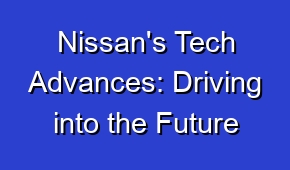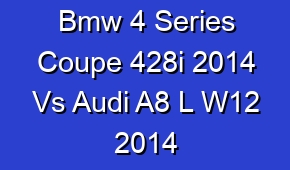Exploring Volvo’s Safety Commitment: A Closer Look

Discover Volvo’s unwavering dedication to safety as we delve into the brand’s commitment to ensuring the utmost protection for drivers and passengers. From innovative technologies to rigorous testing procedures, explore how Volvo continues to set the benchmark for automotive safety standards.
Volvo’s unwavering dedication to safety is thoroughly examined and celebrated in this insightful exploration. As a renowned automotive brand, Volvo has consistently prioritized the well-being of its drivers and passengers. With a firm belief that every life on the road matters, Volvo has implemented innovative safety features that go beyond industry standards. By incorporating cutting-edge technologies and rigorous testing procedures, Volvo has revolutionized vehicle safety. The company’s commitment to safety is evident in their advanced driver assistance systems, such as collision avoidance, lane keeping aid, and blind-spot detection. Volvo’s relentless pursuit of safety excellence has earned them numerous accolades and recognition from organizations worldwide. This dedication to protecting lives extends beyond their own vehicles, as Volvo actively shares their research and findings with other automakers to enhance safety across the industry. Through continuous improvement and collaboration, Volvo is leading the way in making roads safer for everyone.
| Volvo’s commitment to safety is evident in their innovative safety features. |
| Volvo prioritizes safety in every aspect of their vehicle design and manufacturing. |
| Volvo continuously invests in research and development to improve safety standards. |
| The safety of drivers, passengers, and pedestrians is Volvo’s top priority. |
| Volvo vehicles are equipped with advanced technologies to enhance safety on the road. |
- Volvo’s commitment to safety has earned them a reputation as a leader in the automotive industry.
- Volvo conducts rigorous testing to ensure their vehicles meet the highest safety standards.
- Safety innovations by Volvo include collision avoidance systems and advanced driver assistance features.
- Volvo collaborates with experts and organizations to promote road safety globally.
- Safety is deeply ingrained in Volvo’s corporate culture and values.
Why is Volvo’s commitment to safety important?
Volvo’s commitment to safety is important because it prioritizes the well-being and protection of its drivers, passengers, and other road users. Volvo has a long-standing reputation for being a leader in automotive safety, and their dedication to implementing innovative safety features and technologies sets them apart from other car manufacturers.
| Reduced Traffic Fatalities | Enhanced Reputation | Customer Loyalty |
| Volvo’s commitment to safety leads to fewer fatalities and injuries in traffic accidents. | By prioritizing safety, Volvo has gained a strong reputation as a brand that cares about its customers’ well-being. | Customers appreciate Volvo’s dedication to safety and are more likely to remain loyal to the brand. |
| Innovative Safety Technologies | Industry Leadership | Positive Impact on Society |
| Volvo continuously develops and implements cutting-edge safety technologies to protect drivers and passengers. | Volvo’s commitment to safety sets an example for other car manufacturers, encouraging them to prioritize safety as well. | By prioritizing safety, Volvo contributes to creating a safer society and inspiring other companies to follow suit. |
By focusing on safety, Volvo aims to reduce the number of accidents and minimize the severity of injuries in the event of a collision. They conduct extensive research, perform rigorous testing, and continuously improve their vehicles to ensure they meet the highest safety standards.
What are some of the safety features in Volvo cars?
Volvo cars are equipped with a range of safety features designed to protect occupants and prevent accidents. Some notable safety features include:
- City Safety: This safety feature uses radar and camera technology to detect vehicles, pedestrians, cyclists, and large animals ahead of the car. It can automatically apply the brakes to avoid or mitigate collisions.
- Pilot Assist: This feature combines adaptive cruise control and lane-keeping assist to help keep the car centered in its lane and maintain a safe distance from the vehicle ahead. It can also provide steering assistance to help prevent the car from accidentally drifting out of its lane.
- Blind Spot Information System (BLIS): BLIS uses sensors to monitor the car’s blind spots and alert the driver if there is a vehicle in their blind spot. It can also provide steering assistance to help prevent a collision when changing lanes.
- City Safety: This system uses sensors to detect potential collisions and can automatically apply the brakes if necessary.
- Pilot Assist: It combines adaptive cruise control and lane-keeping assist to help drivers maintain a safe distance from other vehicles and stay within their lane.
- Blind Spot Information System (BLIS): BLIS alerts drivers when there is a vehicle in their blind spot, reducing the risk of side collisions.
- Road Sign Information: This feature uses cameras to detect and display important road signs, helping drivers stay aware of speed limits, no-entry signs, and more.
How does Volvo test the safety of their vehicles?
Volvo is known for its rigorous testing procedures to ensure the safety of their vehicles. They conduct various tests, including:
- Crash tests: Volvo conducts extensive crash tests to evaluate the safety performance of their vehicles. These tests simulate different accident scenarios and measure the impact on the vehicle and occupants.
- Virtual simulations: Using advanced computer modeling, Volvo creates virtual simulations to analyze and predict the behavior of their vehicles in various crash scenarios. This helps them make design improvements to enhance safety.
- Safety cage design: Volvo incorporates a strong safety cage design in their vehicles, which provides structural integrity and protection to the occupants in the event of a crash. The safety cage is made of high-strength steel and strategically reinforces critical areas.
- Active safety systems: Volvo equips their vehicles with a range of active safety systems, such as collision avoidance technology, lane departure warning, and adaptive cruise control. These systems help prevent accidents and mitigate the severity of collisions.
- Real-world data analysis: Volvo continuously collects and analyzes real-world crash data to identify trends and patterns. This data helps them understand the effectiveness of their safety measures and guides future improvements in vehicle safety.
- Crash tests: Volvo performs extensive crash tests to evaluate the structural integrity of their vehicles and assess the effectiveness of safety features.
- Simulations: They use advanced computer simulations to analyze and predict how different scenarios may impact vehicle safety.
- Real-world data analysis: Volvo collects and analyzes data from real-world accidents to gain insights and improve their safety systems.
- Collaboration: Volvo collaborates with research institutions, universities, and other industry partners to stay at the forefront of safety innovation.
What is Volvo’s safety vision?
Volvo’s safety vision is to have zero fatalities or serious injuries in their new cars by 2020. This ambitious goal reflects their commitment to continuously improving vehicle safety and reducing the impact of accidents on people’s lives.
| Safety Vision | Key Features | Benefits |
| Zero Fatalities | Advanced driver assistance systems | Reduced risk of accidents and fatalities |
| Zero Serious Injuries | Sturdy construction and safety features | Minimized risk of severe injuries in accidents |
| Zero Accidents | Intelligent safety technologies | Prevention of accidents through proactive measures |
To achieve this vision, Volvo focuses on developing advanced safety technologies, promoting responsible driving behavior, and collaborating with stakeholders to create a safer road environment for everyone.
How does Volvo prioritize pedestrian safety?
Volvo prioritizes pedestrian safety by incorporating features and technologies that aim to reduce the risk of accidents involving pedestrians. Some examples include:
Volvo prioritizes pedestrian safety through advanced technologies such as pedestrian detection, automatic emergency braking, and active safety systems.
- Pedestrian Detection: This system uses cameras and sensors to detect pedestrians in front of the vehicle and can automatically apply the brakes if necessary.
- Pedestrian Airbag: In the event of a collision with a pedestrian, Volvo’s pedestrian airbag deploys from the hood of the car to help mitigate the impact.
- Active Bonnet: The active bonnet system raises the hood of the car in a collision with a pedestrian, creating additional space between the pedestrian and hard structures.
What awards has Volvo received for its commitment to safety?
Volvo has received numerous awards and accolades for its commitment to safety. Some notable awards include:
Volvo has received numerous awards for its commitment to safety, including the prestigious Euro NCAP Safety Award.
- Euro NCAP Best in Class: Many Volvo models have been recognized as “Best in Class” by Euro NCAP, an independent organization that evaluates vehicle safety.
- IIHS Top Safety Pick: The Insurance Institute for Highway Safety (IIHS) has awarded several Volvo models with their highest safety rating.
- Red Dot Design Award: Volvo’s safety-focused design has been honored with the prestigious Red Dot Design Award.
How does Volvo contribute to overall road safety?
Volvo contributes to overall road safety through various initiatives and collaborations. They actively participate in road safety research, advocate for stricter safety regulations, and share their safety knowledge and expertise with other industry stakeholders.
Advanced Safety Features
Volvo is known for its commitment to safety and has developed a range of advanced safety features to protect drivers and passengers on the road. These features include:
– City Safety: This feature uses sensors and cameras to detect potential collisions and automatically applies the brakes to prevent or mitigate the impact.
– Lane Keeping Aid: Volvo vehicles are equipped with a system that monitors the vehicle’s position within the lane and provides steering assistance to help the driver stay in the correct lane.
– Blind Spot Information System (BLIS): BLIS uses radar sensors to detect vehicles in the blind spots and alerts the driver through visual or audible warnings.
Collaboration with Traffic Authorities
Volvo actively collaborates with traffic authorities and organizations to improve overall road safety. They participate in research projects and share their knowledge and expertise to develop safer infrastructure and traffic regulations. By working together with these entities, Volvo aims to create a safer environment for all road users.
Education and Awareness Programs
Volvo recognizes the importance of educating drivers and raising awareness about road safety. They organize various programs and campaigns to promote safe driving practices. For example, Volvo’s “Stop, Look, Wave” campaign focuses on teaching children about the importance of making eye contact with drivers before crossing the road. Additionally, they provide resources and materials for driver training and safety education.
Volvo also aims to raise awareness about the importance of safe driving habits and the role of technology in preventing accidents. By prioritizing safety in their vehicles and promoting a culture of responsible driving, Volvo strives to make roads safer for everyone.




















